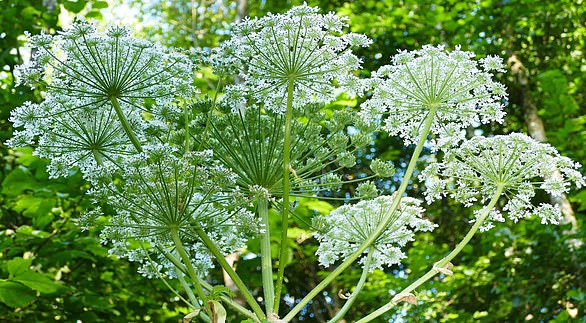Barmaid, 20, left with third-degree burns and blisters, assuming it was from sunbathing on a sunbed… in fact it was a reaction to ‘Britain’s most dangerous plant’
A barmaid was left with third-degree burns and painful blisters ‘the size of grapes’ after an encounter with ‘Britain’s most dangerous plant’.
Chloe Douglas, from Sunderland, Tyne and Wear, woke up one morning with a red rash on her hands and neck after using a sunbed the night before.
The 20-year-old couldn’t remember ever encountering the dreaded giant hogweed and assumed she was just ‘bad luck’ and had reacted with ‘spiky heat’ after her tanning session.
However, over the course of the day the red rash grew into annoying, painful blisters and she sought medical attention.
When she went to the emergency room, doctors revealed giant hogweed as a possible cause of her third-degree burns.
Chloe Douglas, from Sunderland, Tyne and Wear, woke up one morning with a red rash on her hands and neck after tanning on a sunbed the night before
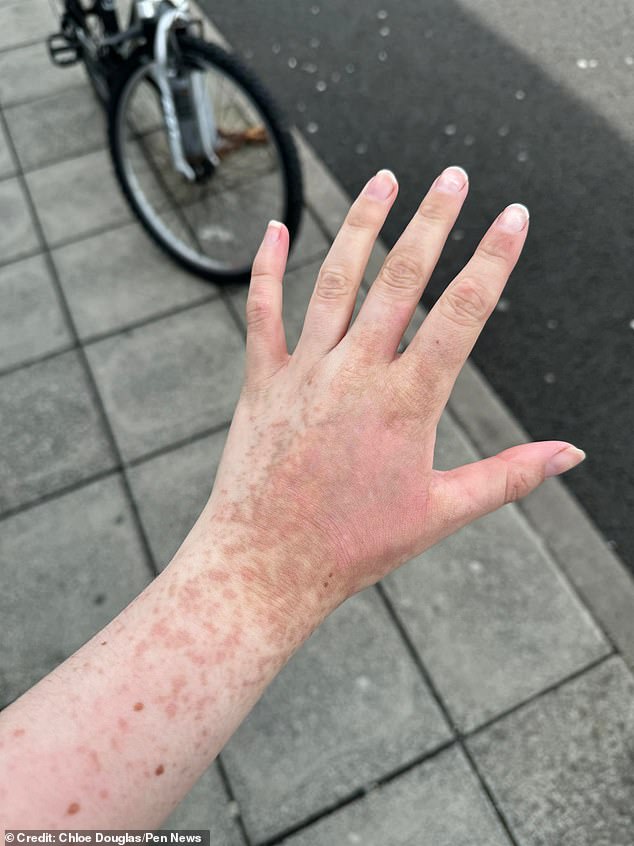
She couldn’t remember ever encountering the dreaded giant hogweed and assumed she reacted badly to a tanning bed
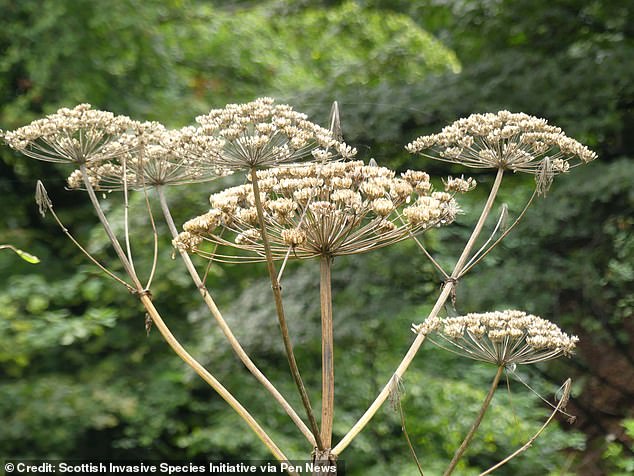
The sap of giant hogweed (pictured) contains toxic chemicals known as photosensitizing furanocoumarins, which react with light upon contact with human skin to cause blisters within 48 hours
Giant hogweed sap prevents the skin from protecting itself from the sun, leading to horrific burns when exposed to daylight.
Often it does not cause immediate pain, and victims may continue to burn in the sun, ignoring any problem.
Furthermore, the plant can spread its sap with just a moment of exposure.
The NHS advises anyone exposed to the sap of giant hogweed to immediately wash the affected area with cold water and soap. If you feel unwell, you should consult your doctor.
“After work I went to the tanning bed for five minutes, which I think was the exposure it took for it to turn into a burn,” she said.
She added: ‘I was fine that evening but I woke up the next day and my hands and neck were covered in a red rash.
‘I laughed it off and assumed I was unlucky and had just gotten the stinging heat from the sunbed.
‘But as the day went on, my right hand started to burn and eventually blisters formed in these areas – I’d say the size of grapes.’
Doctors at the emergency center confirmed the burns were third degree and popped Miss Douglas’ blisters and dressed her wounds, but three weeks later she is still paying the price.
She said: ‘I have scars that have lasted for three weeks and are showing no signs of healing.
‘The recovery was extremely painful, my hand was in constant pain and had to be bandaged due to the open wound where they had punctured the blisters.
‘I had to take a few days off because I really didn’t feel well after having the treatment; It took me over a week and a half to get back to normal.
“But my hands are still scarred and I suspect they will be for some time.”
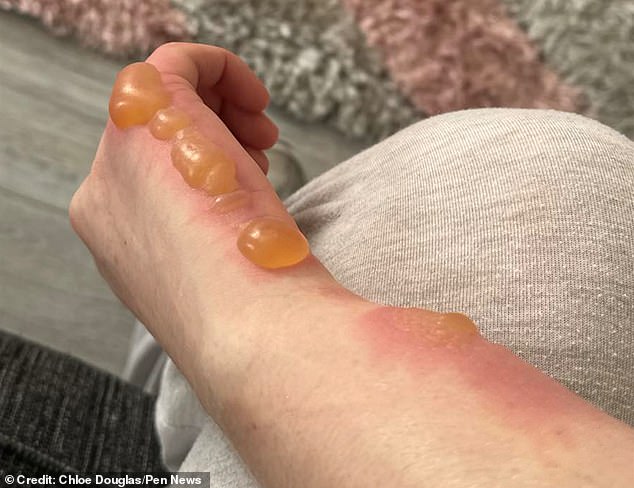
Over the course of the day, the red rash grew into annoying, painful blisters and she sought medical attention
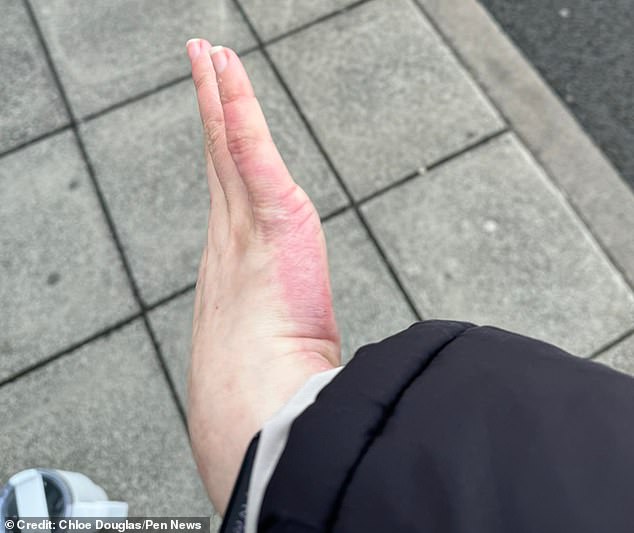
Three weeks after doctors popped her blisters, she is still paying the price and urging others to avoid the poisonous plant
Ms Douglas is now urging others to avoid giant hogweed.
She said: ‘Familiarize yourself with what the plant looks like to ensure that if you see it, you avoid it at all costs.
“Make sure you wash your hands constantly and wear sunscreen.”
Giant hogweed is native to the Caucasus, but was introduced to Britain as an ornamental plant in 1817 and its spread has now gotten out of control.
It was called ‘without doubt the most dangerous factory in Britain’ by Mike Duddy of the Mersey Basin Rivers Trust in 2015.

